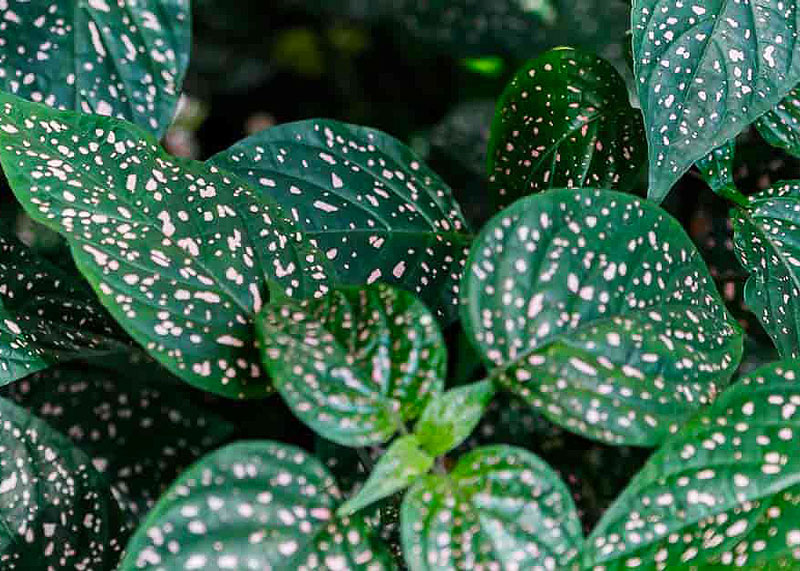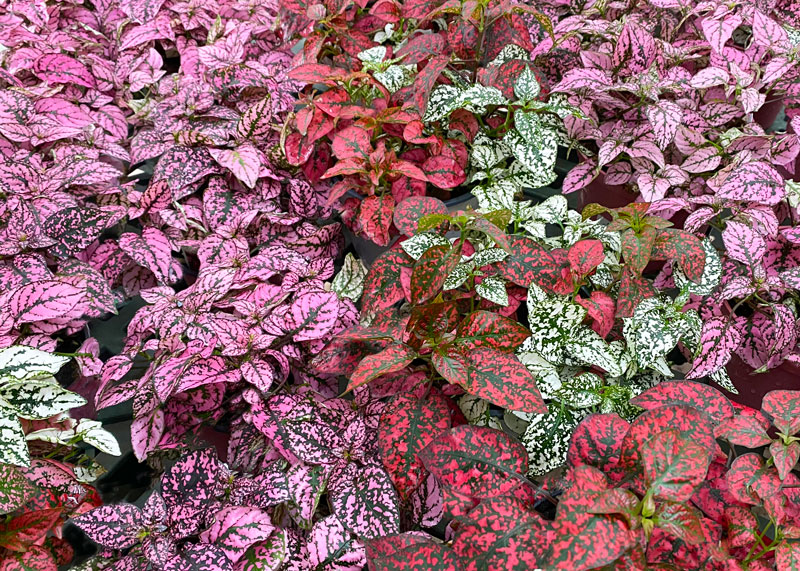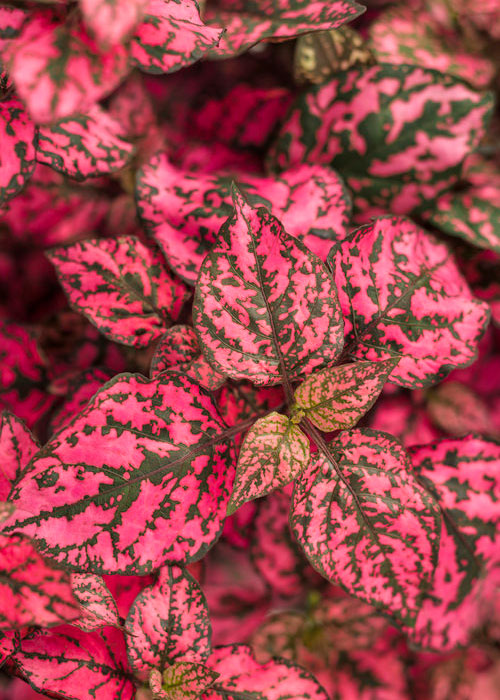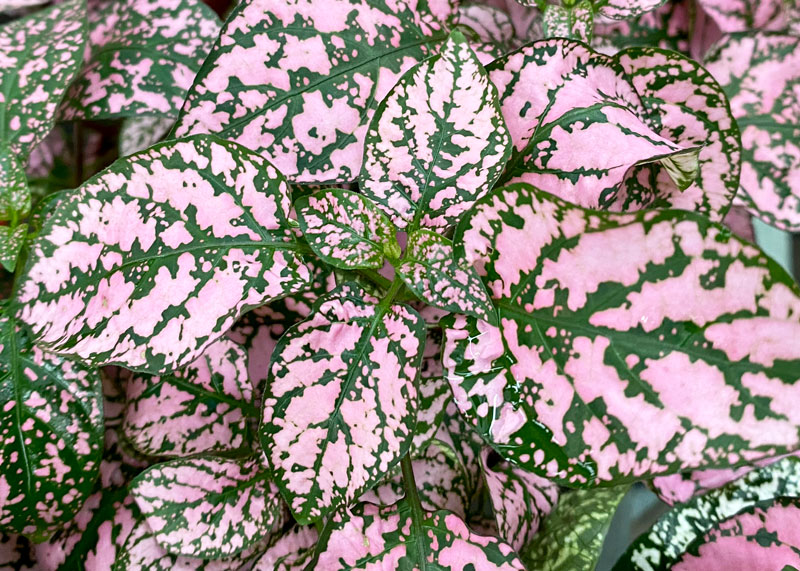Little plant, you’ve come so far
Madagascar must be filled with other-worldly plants. I’ll let you do the searching but suffice to say that this little jewel called pink polka dot won’t even move the needle compared to the others down there. But to plant nerds who don’t get out much (like young Neil as a teenager), this was big stuff.

So, this is the plant I learned from Prof. deWerth at A&M as Hypoestes sanguinolenta, pink polka dot plant. Fair enough. It was a plant, and it was splattered with pink spots. Kinda girly, so not high on the list of a 14-year-old still wondering about his place in the universe.
I spent a couple of years at A&M. Transferred to Ohio State. Finished a degree in floriculture there, started a Master’s at Colorado State breeding carnations, got engaged to a girl back in Ohio, got lonely, (we celebrated our 58th wedding anniversary yesterday), came back to Ohio State and finished my Master’s, and taught for two years.
Somewhere in all that melee I came across this little plant again. Like some of those girls I’d known back in high school, I hardly recognized her. One of the nation’s largest seed producers was doing breeding work on it and they had it in their trial gardens. Who would have guessed it! It wasn’t just pink. It was white and it was almost red.

Jump ahead to the 1990s and the Splash and Confetti Series were introduced with their marked improvements, and then about 10 years ago the tetraploid Hippo Series from Proven Winners brought pink polka dot plants (they need a shorter name) miles down the road.

Tetraploids, you see, have double the number of chromosomes. That means larger, thicker leaves. They stand up better to adverse conditions, and they’re reluctant to flower. These plants, like coleus, quit producing colorful leaves when they start blooming, so the fact that “tets” don’t bloom much is a big plus. But that also means that Hippo Hypoestes must be grown vegetatively (from cuttings or plugs grown clonally).
Oh, the changes. Our little primitive plant has gone high-tech, and it’s got the stripes, spots, and splotches to prove it. These plants are super-colorful now, whether used in floral beds or containers.
The particulars…
• These are tropical plants, so in all but the Rio Grande Valley and along the Texas Gulf Coast, consider them to be annuals.
• Give polka dot plants rich, highly organic soils that you keep moist at all times.
• Morning sun, afternoon shade.
• Fertilize them with a diluted, high-nitrogen, water-soluble plant food applied every couple of times that you water them.
• Pinch out any flower stalks that do try to appear as soon as you see them starting to form.
• They have few serious pest problems, although you may see mealy bugs and white flies on them.
• They can be over-wintered indoors in very bright settings (west windowsill or greenhouse), but it may be easier simply to start over with new, vigorous plants each spring.

Neil, the plant nerd, with the best fact of them all…
I grew up around botanists at A&M. As a group, they must be restless. Or endlessly curious.
I wondered why they felt the need to change from the name Prof. deWerth required us to commit to memory: Hypoestes sanguinolenta. I’ve been reserving a good bit of my available brain space for that name for 60 years. Now I gotta move it over to change it to Hypoestes phyllostachya.
Why the change? I’m of the curious sort, too. I guess it must have been contagious from my upbringing, so I asked my bud ChatGPT, and here’s what I got back. I thought this was fun.
It was all about timing…
1887: British botanist John Gilbert Baker described the species from Madagascar as Hypoestes phyllostachya in the Journal of the Linnean Society, Botany.
1892: Another description appeared under the name Hypoestes sanguinolenta (Latin for “blood-stained”), based on its red-spotted leaves.
1963: Prof. deWerth still teaches it as H. sanguinolenta.
• Somewhere later in the 20th Century (and you thought football replays were slow!): As taxonomic rules (International Code of Botanical Nomenclature) require, the earliest validly published name takes priority. Botanists compared herbarium specimens and determined that the two names were describing the same species – that differences in spotting and coloration were just natural variation, not enough to justify a separate species. H. sanguinolenta is now given only as a synonym.
So, now you know. Aren’t you glad you subscribe to e-gardens!
